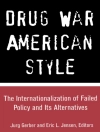The Nazis’ persecution of the Jews during the Holocaust included the creation of prisoner hierarchies that forced victims to cooperate with their persecutors. Many in the camps and ghettos came to hold so-called “privileged” positions, and their behavior has often been judged as self-serving and harmful to fellow inmates. Such controversial figures constitute an intrinsically important, frequently misunderstood, and often taboo aspect of the Holocaust. Drawing on Primo Levi’s concept of the “grey zone, ” this study analyzes the passing of moral judgment on “privileged” Jews as represented by writers, such as Raul Hilberg, and in films, including Claude Lanzmann’s Shoah and Steven Spielberg’s Schindler’s List. Negotiating the problems and potentialities of “representing the unrepresentable, ” this book engages with issues that are fundamental to present-day attempts to understand the Holocaust and deeply relevant to reflections on human nature.
Table des matières
List of Illustrations
Acknowledgments
Introduction: “Privileged Jews, Holocaust Representation and the “Limit” of Judgment
Chapter 1. La “Zona Grigia”: The Paradox of Judgment in Primo Levi’s “Grey Zone”
Chapter 2. The Judgment of “Privileged” Jews in the Work of Raul Hilberg
Chapter 3. Bridging History and Cinema: “Privileged” Jews in Claude Lanzmann’s Shoah and Other Holocaust Documentaries
Chapter 4. Portraying “Privileged” Jews in Fiction Films: The Potential to Suspend Judgment?
Conclusion: “And What Would You Have Done?” Negotiating the Paradoxical Bind
Bibliography
Index
A propos de l’auteur
Adam Brown is a Senior Lecturer in Media Studies at Deakin University, Australia, and a volunteer at the Jewish Holocaust Centre in Melbourne, where he initiated the digitization of the Centre’s survivor video testimony collection. He was awarded the Isi Leibler Prize for the best contribution to advancing knowledge of racial, religious or ethnic prejudice in any time or place for his dissertation, and has written widely on Holocaust representation across various genres, surveillance and film, mediations of rape, digital children’s television, and gaming cultures.












